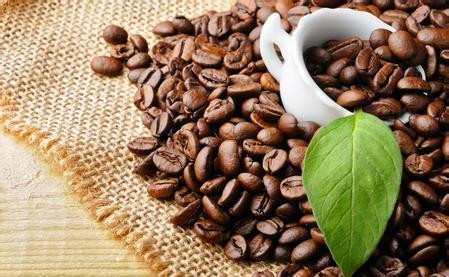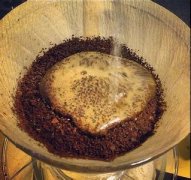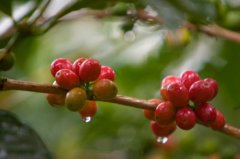Composition Analysis of Coffee beans basic knowledge of Coffee

Fat:
There are many kinds of fat in coffee, the most important of which are acidic fat and volatile fat; acidic fat means that fat contains acid, and its acidity varies with different types of coffee. Volatile fat is the main source of coffee aroma, emitting 40 aromatic substances, is a very complex and subtle ingredient.
Sugar:
Coffee beans contain about 8% sugar, most of which are converted to caramel after baking, giving caffeine a unique brown color.
Essence:
Can be divided into several kinds, accounting for nearly 1/3 of baked beans.
Caffeine
Caffeine is the most eye-catching of all ingredients. It has a wide range of functions, which will affect the brain, heart, blood vessels, gastrointestinal tract, muscle, kidney and other parts of the human body. An appropriate amount of caffeine will stimulate the cerebral cortex, promote sensation, judgment, memory and emotional activity, make the myocardial function more active, dilate blood vessels, enhance blood circulation, and improve metabolic function. Caffeine can also reduce muscle fatigue and promote digestive juice secretion. In addition, it also promotes kidney function and helps the body to expel excess sodium ions from the body, so with the improvement of diuresis, caffeine does not accumulate in the body like other anesthetic and excitatory substances, which will be excreted in about two hours.
Tannic acid:
The refined tannin will turn into a yellowish powder, which can easily dissolve into water. Once boiled, it will decompose into pyrosylic acid, making the coffee taste worse.
Minerals:
There are lime, iron, sulfur, phosphorus, sodium carbonate, chlorine and so on, but because the proportion is not high, so the flavor of coffee is not big, it will only bring a little astringency.
Crude fiber:
The fiber of raw beans will be carbonized after baking. The caramelization of carbon and sugar combine to form the hue of coffee, but the fiber turned into powder will have a considerable impact on the flavor of coffee.
Important Notice :
前街咖啡 FrontStreet Coffee has moved to new addredd:
FrontStreet Coffee Address: 315,Donghua East Road,GuangZhou
Tel:020 38364473
- Prev

Detailed analysis of volatile compounds in coffee beans
★ volatile compounds: volatile compounds are the main source of coffee flavor, especially important for coffee quality. There are many kinds of volatile substances in coffee, and their existence will affect the aroma quality of coffee. Its main source is derived from non-volatile substances in raw beans which are disconnected or derived after reaction in the process of roasting. The role of thermal decomposition, other reactions, or compositions, such as sugar.
- Next

Understand that coffee trees are evergreen shrubs or trees belonging to Rubiaceae.
1 Coffee trees are evergreen shrubs or trees belonging to the Rubiaceae; wild coffee trees can grow to a height of 5 to 10 meters, but coffee trees planted in the manor are often cut to a height of less than 2 meters in order to increase fruit and facilitate harvesting. The opposite leaf of the coffee tree is long oval, the leaf surface is smooth, the end branch is very long, the branch is few, and the flower is white, opening on the petiole.
Related
- Beginners will see the "Coffee pull flower" guide!
- What is the difference between ice blog purified milk and ordinary milk coffee?
- Why is the Philippines the largest producer of crops in Liberia?
- For coffee extraction, should the fine powder be retained?
- How does extracted espresso fill pressed powder? How much strength does it take to press the powder?
- How to make jasmine cold extract coffee? Is the jasmine + latte good?
- Will this little toy really make the coffee taste better? How does Lily Drip affect coffee extraction?
- Will the action of slapping the filter cup also affect coffee extraction?
- What's the difference between powder-to-water ratio and powder-to-liquid ratio?
- What is the Ethiopian local species? What does it have to do with Heirloom native species?

